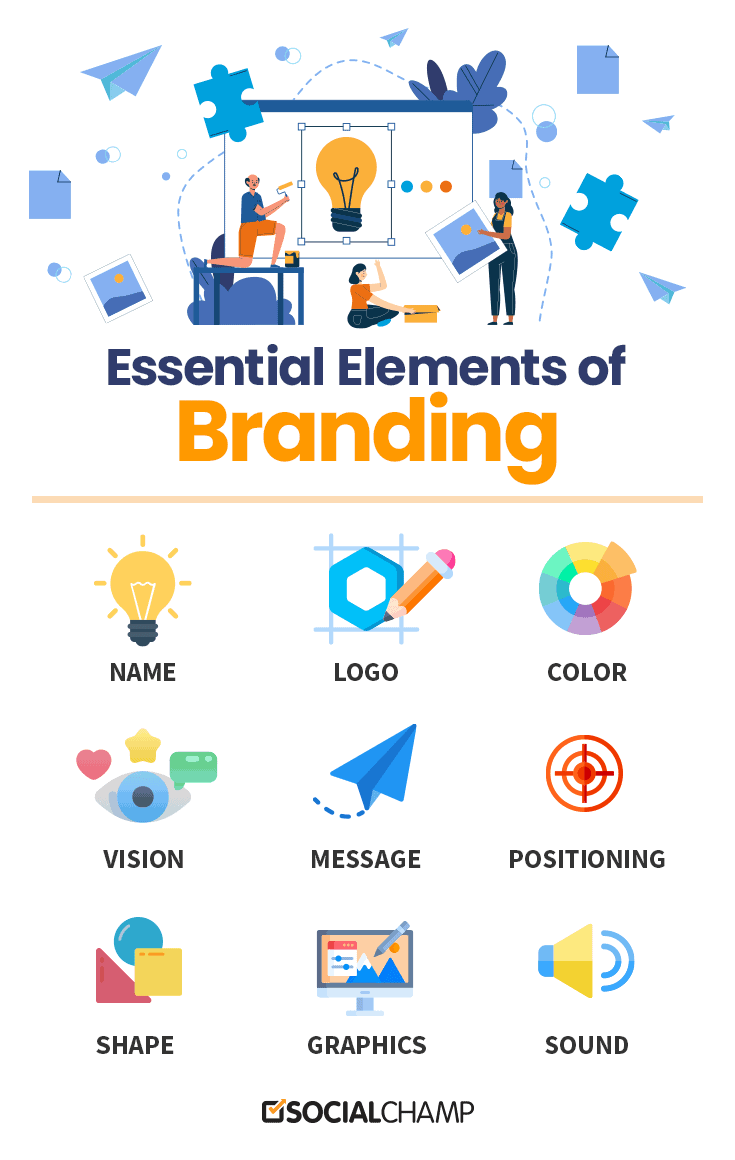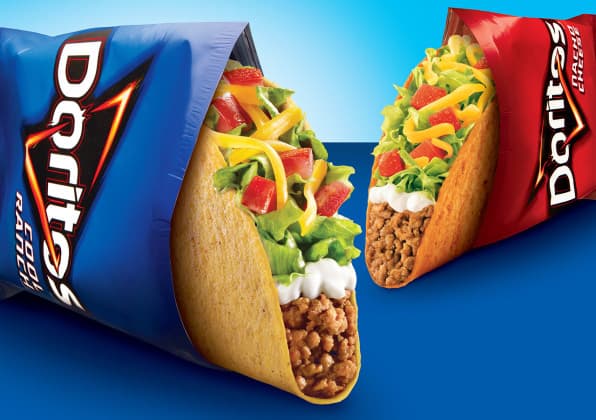Branding strategy is an essential part to introduce and sell your product/service in huge consumer markets. Your brand strategy gives your product/service a personality that comes to the mind of the consumers when they think about your brand. It is both art and science that can be broken down into several essential components.
Let’s study the types of branding and how you can develop a successful brand strategy to grow your business online.
What is Brand & What is Branding?
A brand is a known personality of an organization as far as what products or services they offer.
There is always the point at which an organization or individual makes distinct and subtle engagements to any brand. It is the initial phase of branding. Brief explanations that portray what the organization remains for.
What’s the Difference Between Marketing & Branding?
It might be impossible to separate these two concepts, but here’s how you can understand.
‘Marketing is a subset of Branding.’
Branding is more like a family photo of all members (including all marketing activities) together.
What is Brand Strategy?
Many individuals believe that brand strategy is tied in with conveying and uncovering your brand.
That is only one side of it. The best way to define brand strategy is
“It is a procedure of creating value for customers.”
It includes everything that buyers know, feels, and experience about your brand altogether.
What are the Essential Elements of Branding?
Branding is more than a name and logo. It is a combination of characteristics and properties which affect almost all of our senses. How to name a brand, the concept behind the logo, even every color has its own story. Branding elements sum up to make a good brand story. All these elements combine to create a perception of the brand.

Engaging with customers through a consistent brand voice is an essential milestone towards giving them a chance to become more acquainted with you as an organization.
What are the Types of Branding?
Product Branding
Making the brand recognizable without saying the product name.
Product branding is the most common type of branding. It focuses on making the product recognizable using different brand elements like packaging, shape, and color. People can recognize the brand even when the product is not present.Product branding gives the product or service the personality that gives it identity in the market.
Big companies mostly employ this branding strategy to be differentiable with a variety of segmented products.
Examples of Product Branding
What’s the first brand that comes to your mind when someone says the color yellow and red? McDonald’s. Right?
More examples of product branding could be Coca-Cola, Red Bull, Lux, and Lacoste. This highlights how having a good and distinguishable packaging design is important.

Personal Branding
Taking responsibility for how you represent yourself.
Personal branding is common among celebrities, athletes, politicians, or influencers. It focuses on creating an image of a person among their followers. This image helps them generate leads and business opportunities.Creating a brand around a person differs from a product. Personal branding will make you a public figure, and whatever you do or say publicly can be criticized, both positively and negatively. So, make sure you or your PR agency takes the job seriously.
Examples of Personal Branding
Elon Musk is almost as famous as Coca-Cola. He is the perfect example of personal branding.
More examples of personal branding could be Gary Vaynerchuk, Neil Patel, Billie Eilish, Kylie Jenner, Michael Jordan, and Casey Neistat.
Corporate Branding
Giving the provider identity and opening new opportunities.
Corporate branding is a much broader concept than promoting the product or services. It focuses on branding the organization that is offering its selling. It involves using the provider name in the overall advertising, communication with the stakeholder, and distinguishing identity in the industry.
As an employee, you would always want to work with a company with well-known brands. That’s where corporate branding matters.More than a logo and aesthetic design template, corporate branding harps quality, affordability, customer service, delivery timeliness, selling propositions, and every other important expression of the brand that depends on the organization’s objective and values.
Examples of Corporate Branding
Unilever and PepsiCo are the perfect examples of corporate branding. PepsiCo is the parent brand of many product lines like Pepsi, Lay’s Tropicana, etc. The same goes for Unilever. The company has several product lines in its product mix.
Other examples of corporate branding are P&G, Nestle, L’Oréal, and Dannon.
Co-Branding
Co-branding is the type of branding strategy that connects two or more companies. It results in a fusion of some new product, business growth, spread mutual brand awareness, and opens new opportunities in the market.
Co-branding is a marketing partnership, a great way to build the business and target new audiences.
Examples of Co-Branding
Frito Lay and Taco Bell joined hands and made the Doritos Locos Taco. Nike and Apple partnership for Nike+, Apple Pay, a combination of Apple and MasterCard, other prominent examples.

How to Develop a Successful Brand Strategy?
Identify the Target Audience
The core energy of your brand depends on the ability to focus. That is why characterizing your target audience within the market span will build up your brand’s effectiveness.
Failing to identify the target audience will cause the dilution of the marketing efforts.
The more diverse the target audience, the more insignificant your marketing and brand strategies will be!Research aids you in understanding your target consumer’s point of view and needs, foresee their needs, and put your message in a way that affects them. It additionally reveals to you, and how they see your company’s qualities and your present image.
In that capacity, it significantly brings down the marketing strategies related to brand advancement.
So once you know the target audience, the next step in creating a perfect brand strategy kicks in!Develop Branding Prerequisites
Developing your brand requires you to fulfill its prerequisites; your brand must have its name, logo, and tagline, which is essential for your brand to be recognized in the marketplace.
Developing a unique identity in the market and making your brand symbolize your organization is the ultimate objective.
Most of the brands introduce their brand names, logo, and tagline to the people in their organization for review purposes; this way, research is not executed correctly.The correct way is to have proper research and survey on your consumers‘ market to get hold of the current trends and consumer response.
Focus More on Content Marketing
Customers today are assaulted with more adverts and messages than any other time in marketing history, so it weakens the effect of more conventional channels.
Content marketing can resonate more intensely with your clients since it’s specifically custom-made to their requirements and interests.
It’s a method for passing on your brand’s identity and offering without being overly marketed. And which can go far toward building brand trust among your target audience.An ever-increasing number of brands perceive the effect of content marketing, so the organizations that overlook it will progressively fall behind.
Use Social Media Tools
Social media is one of the most effective to promote your business and gain leads without spending a hefty amount on the marketing budget.
If you wish to keep your business in touch with your potential customers and prospects, you can’t afford to ignore social media tracking tools.
Social media tools help you monitor your brand’s reputation, outreach, and feedback.
Sticking with the basic features of any social media network is profitable, but using social media tools can increase the benefits of the time and effort you put into your work.
Social media tools offer insights, analytics and help design your brand promotion and management strategies.
There are a handful of tools that help manage social media, and companies use the ones that fit business models best.
Use Facebook Wisely
Over 1.4 billion users use Facebook to connect with what matters to them, and 900 million visits every day.
Facebook provides real-time information, targeted audience adverts, and deeper insights with sponsored posts to connect with the right audience.
“Whether you sell in-person, online, or through an app, you know what you’d like to do next as your business grows. Two billion people use Facebook every month to connect with friends and family and to discover things that matter. Marketing on Facebook helps you find new customers and build lasting relationships with them.” – Facebook Business.
Suppose you are not using your personal Facebook account to build brand awareness for yourself or your organization. In that case, you are missing out on arguably the world’s most influential and free marketing tool with 1 Billion active users.
Brand Endorsement by Industry Influencers
Celebrities have a massive fan following. When famous people are seen promoting or endorsing a specific product or brand, it prompts their audience to purchase the brand either directly or subliminally.
This lets the sponsors interact with their target audiences, which traditional promotions and marketing techniques cannot accomplish.
Marketing Maestros are always looking forward to better marketing techniques, hacks, and walkthroughs.MarketWatch research in Social Media Week states that signing a celebrity for brand endorsements increases its sales to 24%.
Although it’s not a new idea in marketing, celebrity endorsements and many brands still do not use the theory of celebrity endorsements.
Manage Efficiently With Social Media Tool
Bring all your social profiles under one roof with Social Champ. Craft, plan, publish and analyze your social content in just a few clicks.
How Social Media Can Speed Up Your Brand Strategy?
Social media is a place to openly interact with your customers and tell them more about your brand.
Target the potential customers and keep them updated by posting about your new products, features. And ongoing sales across all social platforms.
Market your products and services on social media to grow and expand your online business.
Social media is a cost-effective means of marketing. You need to maintain a steady presence.
You must generate a content strategy and distribution system before starting posts on your startup’s social media accounts.
Without a definite direction, you’ll be distracted.
Use analytics to create a laser-focused action plan that will make your marketing strategy shine.
You can also schedule your posts in advance to skip out on any significant event.
All you need is social media automation tools like Social Champ to get bulks of your content across the social media platforms!
How Does Social Champ Optimize Your Brand Strategy?
If you think social media is nothing more than following your friends and getting the latest gossip about celebs, then you might be wrong. It has reformed the whole concept of shopping.
By 2021, over 2.14 billion people worldwide will buy products and services online.
From posting simple pictures of your product or blog post links to create targeted marketing campaigns, plan and implement a social media strategy with Social Champ.
Social Champ is an easy-to-use, all-in-one social media management tool that will reduce your efforts and minimize your time on socials. As soon as your team is done with brainstorming the ideas to improve your brand strategy, it’s time to implement them.
The major step to show up on social media is by posting updates, news, articles, or visuals.
With Social Champ, you can connect all your social channels in one place and post or schedule content in just a few clicks.
More than just a post scheduler, it also lets you track the performance of your posts, create presentation-ready pdf reports to analyze numbers and see how well your brand strategy is performing on different channels.
Engage with your audience through Social Champ’s social inbox. It collects all your messages from different social networks in one tab and makes it easy for you to respond to all.
You can also use the RSS feed and content suggestion feature as your brainstorming partner. It gives you the best suggestions on any topic you want, and you can directly post them on your social channels.
With Social Champ, you can take your brand’s social presence to another level. It gives you the power to rule the digital space.
Wrapping It Up
Start planning the overall social media strategy by understanding who your audience is.
Defining a consistent tone of voice for the brand is the most integral part of your social media strategy.
Find the tone that goes with your brand’s value and is consistent with your brand’s tone and style.
Take your time to create high-quality product photographs with your business logo.
Maintain an overall theme in your social media posts, and keep an eye on your post’s analytics with Social Champ to know which one performs the best.
















